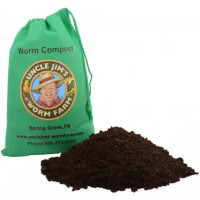
Once the days grow longer and we start seeing little buds on trees and daffodils popping up around the periphery of the yard, it’s easy to want to get some plants in the dirt. And though we can’t grow a lot of the vegetables that require the mid-summer heat to thrive, there is actually a lot that we can still plant–even if it is before our last frost.
There’s a whole group of frost-tolerant plants that will not only survive a frost, they will also thrive in cooler temperatures. Typically Brassicas–like Brussel sprouts and cabbage, root vegetables (think carrots, potatoes, onions, and radishes), and leafy greens (arugula, lettuce, mustard, and kale) can all do well with moderately cool temperatures.
There are a few things to keep in mind when planting in the early part of spring or fall when temperatures are cool. First, it’s good to remember that while these plants can survive a frost, a hard freeze is a little less tolerable. So wait to plant the plants until you are fairly confident that temperatures will remain above 28-30 degrees.
If you do have a small dip in temperatures after your plants are in the ground–cover them up with a blanket until the weather subsides. We often have one really hard frost in April, but the rest of the month (and even most of March) is frost free. So we go ahead and put our plants out–but we watch the weather closely.
If temperatures show that they are going to dip below 30, we bring out the weather-rated row covers. You can actually buy row covers for this purpose, but we’ve also been known to pull out a beach towel or a quilt. They all work the same. The trick is to take it off before the weather warms back up–or else the blanket will smother the plants. Our freezes usually occur at night, and then temps warm up the next day, so we cover the plants just before dark and uncover them when we wake up. It’s not as much work as it sounds and gives us a chance to get a few steps in before and after work.
The other thing to note is that there are many frost-tolerant and bolt-resistant varieties of plants in this family–if temps are cooler, you want to use frost-tolerant varieties. These varieties do better in cold temperatures, while bolt-resistant varieties do better in warm temperatures–and won’t bolt and go to seed when the weather heats up. Picking the right variety for your temps can make a huge difference in the success of your plants.
Finally, know that plants are often frost resistant–but the fruit is not. If a plant couldn’t survive the freezer without altering its taste or structure–it likely won’t be able to survive a frost. So if you have a cabbage that’s almost ready to harvest, and temperatures are going to drop–go ahead and pick it–or cover it with a blanket or airtight bucket. Otherwise, you won’t have a head of cabbage the next morning… you will have a nice plant, with a nasty head of cabbage rotting in the middle. It’s a real heartbreaker.
You can start gardening before the heat of summer picks up with the right plants, the best varieties for your climate, and a quick response if circumstances change.








